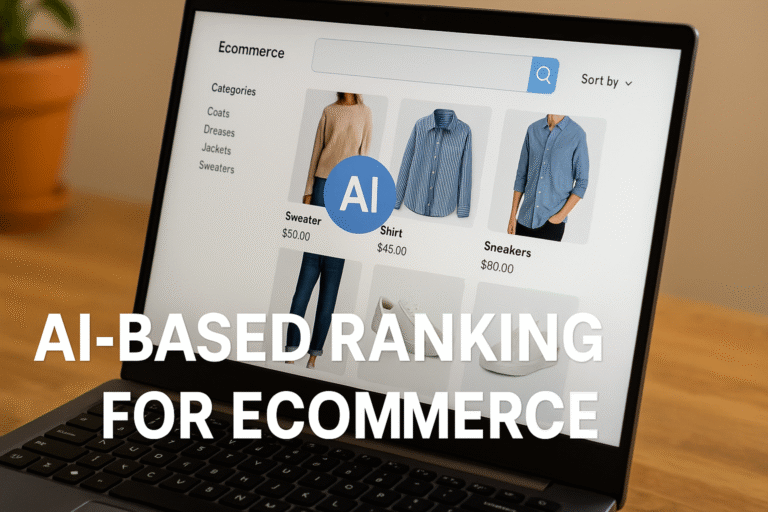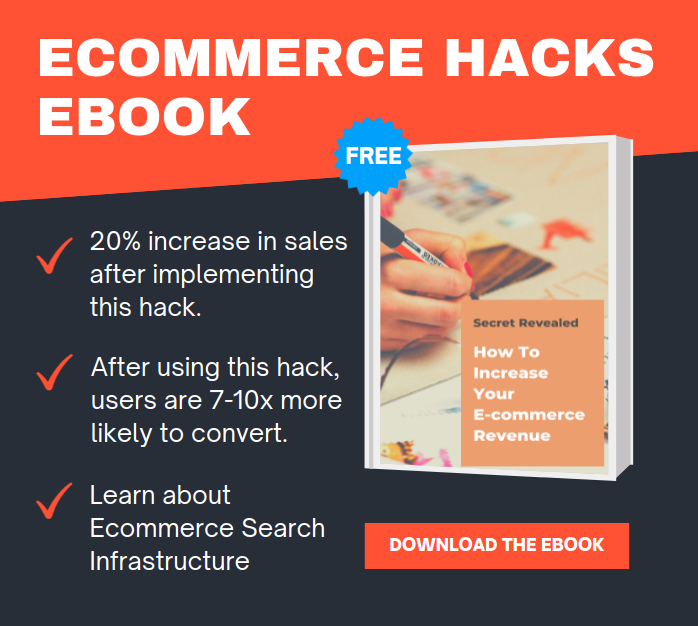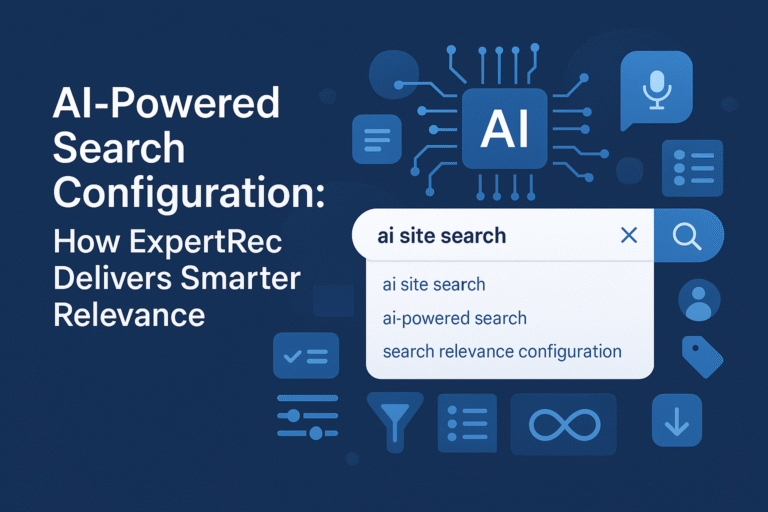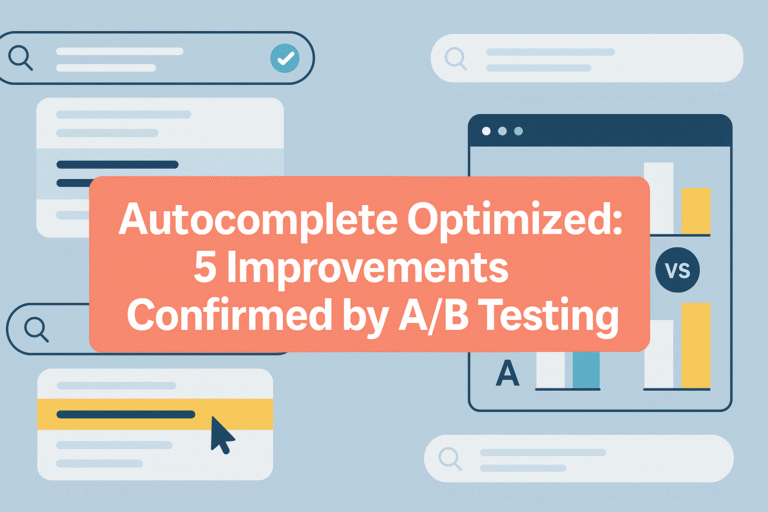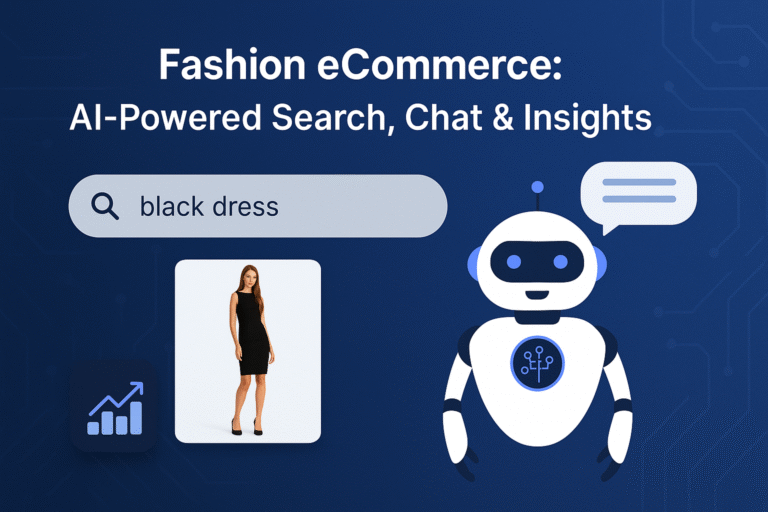With the rise of artificial intelligence, ecommerce platforms are undergoing a profound transformation especially in how they rank and present products to users. Traditional ranking systems based on keyword matches or chronological listings are rapidly being replaced by intelligent algorithms that take into account relevance, user behavior, and contextual signals. This is where AI-based ranking for ecommerce comes in, offering a smarter, data-driven way to improve customer experience and drive conversions.
In this blog, we’ll explore the technical foundations of AI-based ranking, examine its ROI, evaluate if it’s worth the investment, explore possible alternatives, and discuss how solutions like Expertrec make AI ranking accessible even for non-technical teams. Whether you’re a developer, product manager, or ecommerce founder, this guide will equip you with a deep understanding of how AI ranking works and when to use it.
What Is AI-Based Ranking in Ecommerce?
AI-based ranking refers to using machine learning models and data-driven techniques to order products on ecommerce platforms in a way that maximizes user engagement, relevance, and conversion rate. Unlike static rule-based systems, AI models continuously learn from customer behavior, context, and feedback.
How It Works
At the core of AI-based ranking are machine learning models trained on features such as:
- User behavior (clicks, views, purchases)
- Contextual information (device, location, time of day)
- Product attributes (price, availability, category, tags)
- Textual content (product titles, descriptions)
- Historical conversion data
These features are combined into training datasets to power models like:
- Gradient Boosted Trees (e.g., XGBoost, LightGBM)
- Neural ranking models
- Learning to Rank (LTR) frameworks like LambdaMART or RankNet
Once trained, these models assign a relevance score to each product for a given query or user profile, which determines its position in the results.
Ranking Algorithms
AI-based ranking systems may use:
- Pointwise ranking: Predict a relevance score for each item independently.
- Pairwise ranking: Learn preferences between item pairs.
- Listwise ranking: Optimize over entire ranked lists to improve metrics like NDCG or MRR.
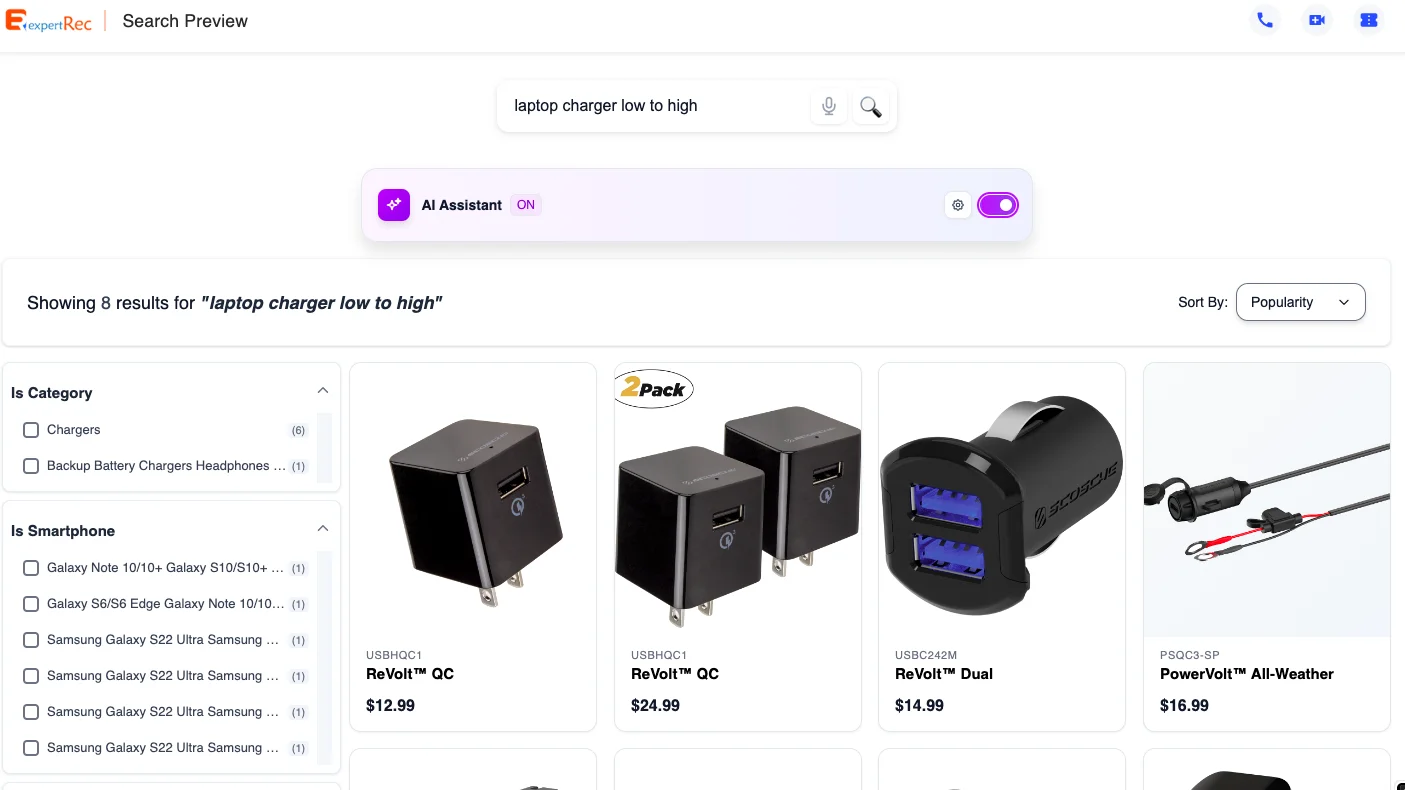
Benefits of AI-Based Ranking
- Improved Relevance: AI takes user context and preferences into account, providing more personalized results.
- Higher Conversions: Recommending the right product at the right time significantly improves the likelihood of purchase.
- Dynamic Optimization: Models learn continuously from new behavior data, adapting over time.
- Personalization: Ranking can be personalized per user, segment, or session.
- Scalability: AI models scale better than manually maintained rules.
Technical Challenges
Despite its benefits, implementing AI-based ranking poses certain technical challenges:
- Data Volume and Quality: Requires large, clean datasets.
- Model Complexity: Training and fine-tuning ranking models need deep ML expertise.
- Infrastructure Overhead: Serving real-time results with low latency demands robust infrastructure.
- Cold Start Problem: For new users or products with no historical data, performance can suffer.
- Explainability: AI rankings are often hard to explain, which can impact user trust and debugging.
Is AI-Based Ranking Worth Using?
The value of AI-based ranking becomes clear in use cases where:
- Product catalogs are large (1000+ SKUs)
- Users have diverse needs and behaviors
- Search and discovery are central to the buyer journey
- Conversion optimization is a business priority
For mid to large-sized ecommerce platforms, AI ranking typically boosts ROI through higher cart sizes, reduced bounce rates, and repeat purchases.
However, if you run a niche store with a small catalog or limited data, simpler solutions might suffice until traffic justifies AI.
Alternatives to AI-Based Ranking
While AI is powerful, it’s not always the right fit. Alternatives include:
- Rule-Based Ranking: Manual curation, category-based sorting
- Popularity Ranking: Based on top sellers or most-viewed items
- Textual Relevance: Using BM25 or TF-IDF keyword matches
- Heuristic Blending: Mixing static signals (e.g., price low-to-high)
These are easy to implement but lack the adaptability and performance of AI models. However, they may be appropriate for:
- Low-traffic or early-stage ecommerce sites
- Situations with limited historical data
- Low product diversity scenarios
How Expertrec Helps
Expertrec offers a no-code AI search and ranking engine designed for ecommerce businesses that want AI-powered performance without engineering complexity. Here’s what makes it a strong choice:
- Plug-and-play integration with Shopify, WooCommerce, Magento
- Automatic relevance scoring using AI/ML models
- Real-time analytics and A/B testing tools
- Low-latency infrastructure optimized for ecommerce
- Customizable UI/UX to match your brand design
With Expertrec, you don’t need to worry about building and training ML models or managing infrastructure. Its AI-based ranking comes out of the box and adapts over time to your users’ behavior.
FAQs
Traditional ranking relies on predefined rules (e.g., sort by price or rating), while AI ranking learns from data to determine the optimal product order for each query or user.
Can I implement AI-based ranking without a data science team?
Yes, platforms like Expertrec offer AI-powered ranking without requiring ML expertise.
How long does it take to see results from AI ranking?
Initial improvements are visible within a few weeks, but models get better over time as they collect more behavioral data.
Is AI ranking GDPR-compliant?
Yes, if implemented correctly. Expertrec ensures compliance with GDPR by allowing anonymized behavior tracking.
Does AI ranking work for mobile apps too?
Yes, AI ranking algorithms can be deployed on both desktop and mobile platforms with proper APIs and integrations.
